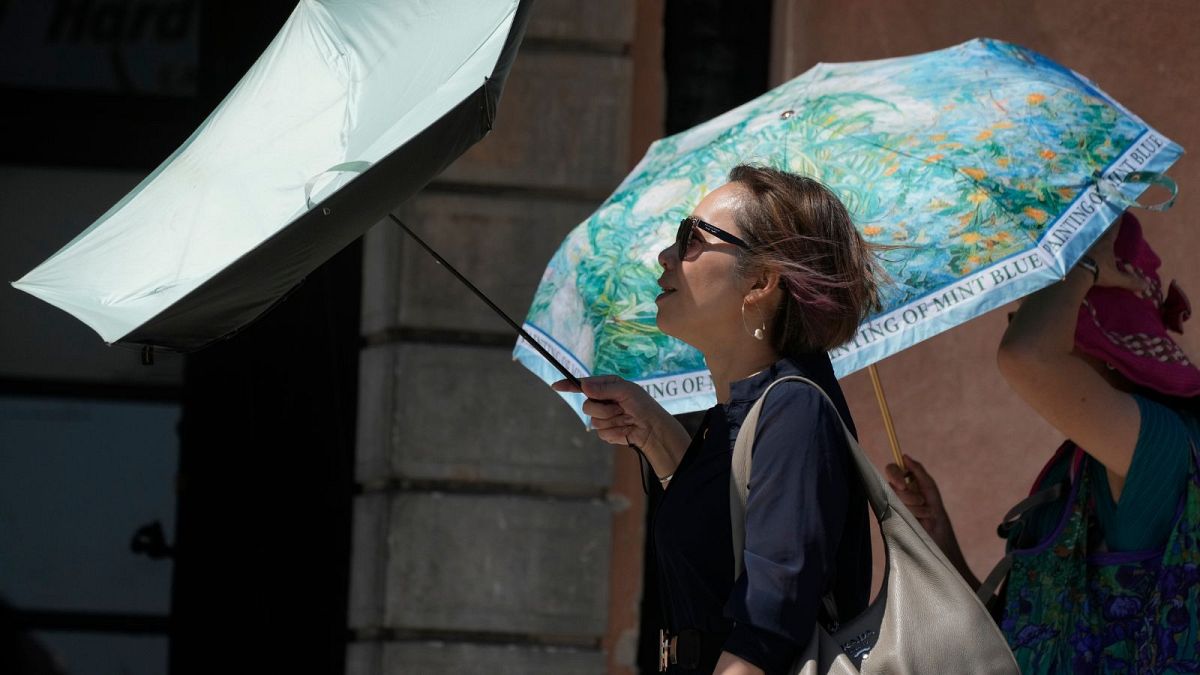Europe’s latest heatwave dialled up daily power demand by up to 14 per cent, as Europeans turned up their air conditioning to stay cool.
But the sunshine also increased the availability of solar energy, the same analysis from energy think tank Ember shows, helping Europe’s power grids pass “the stress test” of extreme heat.
Between 28 June and 2 July, peak daily temperatures averaged out at 35°C in Germany and Spain – where some local temperatures crossed 40°C – and 34°C in France.
As a result of soaring air con use, daily power demand soared by up to 14 per cent in Spain, 9 per cent in France, and 6 per cent in Germany, compared to the previous week.
“Despite the huge pressure, European grids passed the stress test, and solar electricity played a major role in keeping them running,” says Pawel Czyzak, Europe Programme Director at Ember.
How did solar energy help get Europe through the heatwave?
June 2025 saw the highest EU solar generation on record at 45 terrawatt hours (TWh), a 22 per cent increase from the year before. This flooded grids with cheap, clean electricity during daytime hours.
In the peak days of the heatwave, solar delivered up to 50 gigawatts (GW) of power in Germany, generating 33-39 per cent of the country’s electricity.
By contrast, thermal power plants struggled in the heat. In France, 17 out of 18 nuclear power plants faced capacity reductions during the heatwave, with some shut down completely due to high river temperatures which meant their waters couldn’t be used as usual to cool the reactors.
The Beznau nuclear power plant in Switzerland also had its capacity halved as the River Aare crept up to 25°C – a decision taken to protect the ecosystem.
In Poland – where there are long-running concerns about the cooling of coal power plants – the government and grid operator PSE proposed an ‘anti-blackout package’ at the peak of the heatwave on 2 July.
Other parts of power systems also struggle during the heatwaves. The overheating of cables is the likely cause of power outages in Italy on 1 July, Ember notes.
The heatwave triggered a spike in electricity prices
“The surplus of solar energy during the day helped prevent blackouts,” says Czyzak. “However, the use of energy storage is still insufficient, leading to reduced energy supply after sunset. This translated into a sharp increase in electricity prices.”
According to Ember’s analysis, this supply-demand imbalance caused average daily power prices to double or even triple in some countries.
Between 24 June 24 and 1 July, average daily electricity prices rocketed by 175 per cent in Germany, 108 per cent in France, 106 per cent in Poland, and 15 per cent in Spain. During the evening peak on 1 July, prices spiked above €470/MWh in Poland and €400/MWh in Germany.
Interconnectors – cables used to connect the electricity systems of neighbouring countries – ensured these price spikes dissipated quickly, Ember explains.
As the heatwave swept across Europe, peaking in Madrid on Sunday 29 June, Paris on Tuesday 1 July, and Berlin and Warsaw on Wednesday 3 July, interconnectors helped deliver electricity to where it was needed most.
Solar electricity storage and renewable ‘energy islands’
But the continent’s power infrastructure still needs a serious upgrade to cope with increasingly severe heatwaves due to climate change.
Greater battery storage is needed to spread out the variable energy that solar and wind produce, Ember says. And better demand flexibility – i.e. shifting non-critical demand to periods of abundant supply – will help ease peak stress on the grid.
“Perhaps the biggest opportunity is to store solar electricity, to help power air conditioning well into the evening,” says Czyzak.
The experts are also calling for more investment in distributed energy sources capable of starting the network on their own, such as solar farms with grid-forming inverters. Unlike traditional grid-following inverters that only sync with the existing grid, these inverters can start without an external voltage supply.
A recent project by the UK National Energy System Operator (NESO) showed the potential of this solution, exploring how wind and solar could be used to restart the grid after a blackout. It recommended building renewables-powered energy islands that are later joined to the whole grid.
Belgium’s transmission system operator is testing grid-forming assets too. It’s all part of the global goal to triple renewable energy capacity by 2030, a measure to mitigate the climate crisis – and the increasing heatwaves it is bringing.
